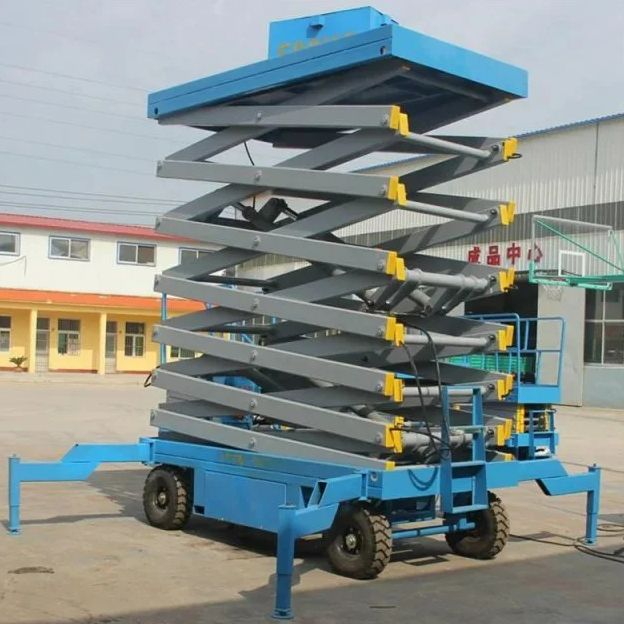
Scissor lifts have become a staple in industries like construction, warehousing, and maintenance. They provide a safe and efficient means of elevating workers to perform tasks at various heights. However, with their widespread use comes the responsibility of ensuring safety and compliance with regulations. The Occupational Safety and Health Administration (OSHA) has set forth specific rules and guidelines for the safe operation of scissor lifts, and understanding these is crucial for both operators and employers.
Understanding OSHA and its regulations
OSHA, or the Occupational Safety and Health Administration, is a division of the United States Department of Labor. Its primary mission is to ensure workplace safety and health by enforcing standards and providing training, outreach, education, and assistance.
The regulations set forth by OSHA are designed to protect workers from hazards that may arise in the course of their employment. These regulations cover a wide range of industries and practices, including the operation of scissor lifts. Understanding these regulations is crucial for anyone who operates or manages the use of scissor lifts in the workplace.
General requirements for scissor lift operation
Before operating a scissor lift, it is essential to conduct a thorough inspection to ensure that the equipment is in safe working condition. This includes checking for any visible damage, ensuring that safety features are operational, and verifying that the lift is properly maintained.
It is also important to assess the worksite for any potential hazards, such as overhead obstructions, unstable ground, or adverse weather conditions. Operators should ensure that the area around the lift is clear of personnel and obstacles before raising the platform.
Employers are responsible for providing appropriate training to operators, ensuring that they are familiar with the specific model of the scissor lift being used, and understanding the safety features and limitations of the equipment.
Safety precautions and guidelines
When operating a scissor lift, it is crucial to follow safety precautions to prevent accidents and injuries. Some key safety guidelines include:
Stable ground: Ensure that the ground is stable and capable of supporting the weight of the lift and the load it carries. Use outriggers or stabilizers if necessary, and avoid operating the lift on slopes or uneven surfaces.
Load capacity: Adhere to the manufacturer’s specified load capacity and do not exceed it. Overloading the lift can lead to tipping or structural failure.
Fall protection: Use personal fall protection systems, such as harnesses and lanyards, when working at heights. Ensure that guardrails are in place and operational.
Power lines: Maintain a safe distance from power lines and electrical equipment. Use non-conductive materials for the lift’s platform if necessary.
Emergency procedures: Familiarize yourself with the emergency lowering procedures in case of power failure or other emergencies. Ensure that all operators know how to safely lower the lift and evacuate.
Specific regulations for scissor lifts
OSHA has specific regulations for scissor lifts outlined in 29 CFR 1926.453. These regulations cover various aspects of scissor lift operation, including:
Platform safety: The platform must have guardrails, toeboards, and midrails to prevent workers from falling. The guardrails should be between 39 and 45 inches high and should be able to withstand a force of at least 200 pounds.
Load limits: The combined weight of workers, tools, and materials on the platform must not exceed the lift’s rated load capacity. Exceeding the load limit can cause the lift to become unstable and tip over.
Stability: The lift must be positioned on a stable and level surface. If the lift is used outdoors, it should not be operated in high winds or severe weather conditions. Additionally, the use of stabilizers or outriggers is required if the lift is used near power lines or other hazards.
Maintenance: Regular maintenance and inspections of the scissor lift are essential to ensure its safe operation. OSHA requires that employers keep records of maintenance and inspection activities.
Training requirements for scissor lift operators
OSHA requires that all scissor lift operators receive proper training before they are allowed to operate the equipment. This training should cover the following:
Operating procedures: Operators should be trained on the specific model of scissor lift being used, including its controls, safety features, and emergency procedures.
Hazard recognition: Operators should be able to identify potential hazards associated with scissor lift operation, such as overhead obstructions, electrical hazards, and unstable ground.
Load limits: Operators should understand the importance of adhering to load limits and be able to recognize when the lift is overloaded.
Inspection and maintenance: Operators should be trained on how to conduct pre-operation inspections and identify potential maintenance issues.
Employers are responsible for ensuring that their operators are adequately trained and that the training is documented. Refresher training should also be provided periodically or when there are changes in the work environment or equipment.
Conclusion
Scissor lifts are valuable tools for elevating workers to perform tasks at heights, but their operation comes with inherent risks. Adhering to OSHA regulations and implementing safety measures is crucial for preventing accidents and ensuring the safety of workers. Proper training, regular inspections, and adherence to safety guidelines are essential components of scissor lift operation.

 English
English







